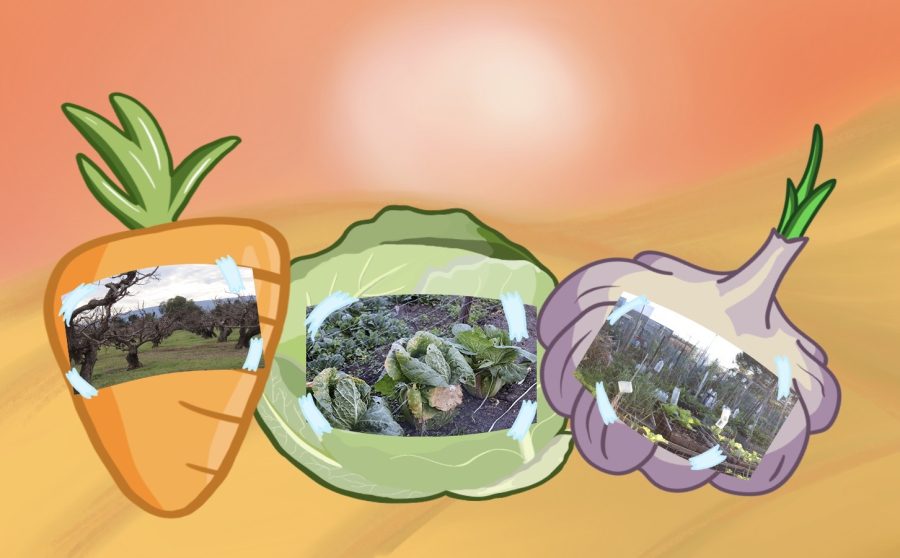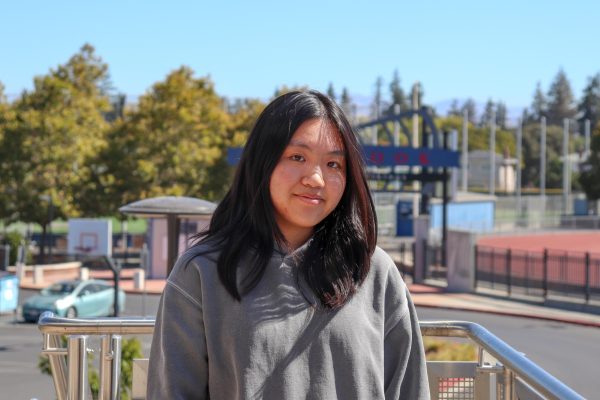Urban agriculture sprouts in the bay
Graphic illustration by In-Depth Section
Community gardens and orchards around the Bay Area have brought agriculture into the urban environment.
February 1, 2022
Urban agriculture — the production, marketing and distribution of food in urban and suburban areas — has taken root across the Bay Area. Breathing life into the area’s bustling urban sprawl, community gardens and local orchards offer residents fresh produce and opportunities to form meaningful connections.
“I grow flowers, beans and cucumbers,” sophomore Atharva Rayan said. “It helps me feel more connected to the environment.”
The idea of urban agriculture dates back to 3500 B.C., when Mesopotamian farmers reserved plots of land for farming in cities. From the 1880s to the early 1900s, European cities like London, Paris and Stockholm had allotment gardens, plots of land given to the urban poor, to help them become self-provisioning. With one acre of land each, these families grew and sold their own crops, gaining easy access to fresh food and income. In the 1890s, English urban planner Ebzener Howard championed the garden city movement, which moved gardens and larger agricultural fields to be within walking distance of towns.
Today, urban agriculture can be found scattered across the Bay Area. Once populated with unending orchards and fields, the area’s agriculture is now preserved in community gardens and local orchards.
Founded in 1990, Sunnyvale’s Orchard Heritage Park boasts 10 acres of open land, housing 850 to 900 blechnum apricot trees. Trees are often replanted so the lush apricot trees can be sustained and provide greenery to the city of Sunnyvale year-round. The trees are carefully tended to by Charlie Olson, also referred to as Sunnyvale’s apricot hero, who has headed the orchard for more than 25 years. Park officials hope that the space will continue to educate community members about agriculture and encourage gardening in the community through educational programs in its children’s teaching garden.
“I hope we’re allowed to expand to allow people to be able to grow gardens in any space they can,” said Laura Babcock, director of the Sunnyvale Heritage Park Museum.
Benefits of urban agriculture include cutting energy costs of healthy food production because it thrives in smaller spaces and coexists with city life. Additionally, as havens for pollinators, community gardens promote biodiversity in suburban areas. However, urban agriculture faces challenges of limited space, as agriculture groups struggle to balance their agendas with their city’s development goals. Changing support from local governments can also prove difficult to navigate, and programs consistently face a lack of funding and support from the city.
“You always have a tussle with politicians’ decisions as to whether providing housing is more important than providing agriculture,” Babcock said. “It’s really up to every city to find their balance the best that they can.”
Despite this, urban agriculture continues to show promise as local food supply in cities has noticeably grown through the development of urban farms. Beyond providing space for fresh produce, community gardens also help to increase social bonds among people in a neighborhood, regardless of diverging backgrounds.
Many feel that urban agriculture has built promising relationships within the community,” Babcock said. “It’s unreal, and it’s always been culturally diverse. There’s always been a sense of pride.”
Gardens strengthen pride within a community, serve as an excellent opportunity for education on food sustainability and involve community members with their surroundings.




































































